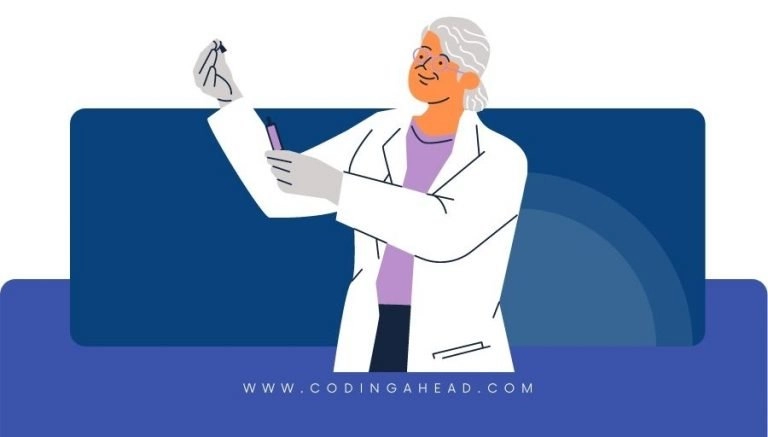How To Use CPT Code 93228
CPT 93228 refers to the review and interpretation of data collected from external mobile cardiovascular telemetry with electrocardiographic recording. This article will cover the description, procedure, qualifying circumstances, usage, documentation requirements, billing guidelines, historical information, similar codes, and examples of CPT code 93228.
1. What is CPT 93228?
CPT 93228 is a medical code used to describe the review and interpretation of data collected from external mobile cardiovascular telemetry with electrocardiographic recording. This procedure involves the continuous recording and transmission of electrocardiographic data to detect abnormal heart rates and rhythms, with the findings reported by a physician or other qualified health care professional.
2. 93228 CPT code description
The official description of CPT code 93228 is: “External mobile cardiovascular telemetry with electrocardiographic recording, concurrent computerized real-time data analysis and greater than 24 hours of accessible ECG data storage (retrievable with query) with ECG triggered and patient-selected events transmitted to a remote attended surveillance center for up to 30 days; review and interpretation with report by a physician or other qualified health care professional.”
3. Procedure
- Patient is fitted with an external mobile cardiovascular telemetry device.
- Device continuously records and transmits electrocardiographic data for up to 30 days.
- Data is concurrently analyzed in real-time by a computerized system.
- ECG triggered and patient-selected events are transmitted to a remote attended surveillance center.
- Physician or other qualified health care professional reviews and interprets the data.
- A report is generated based on the findings.
4. Qualifying circumstances
Patients eligible to receive CPT code 93228 services are those who require continuous monitoring of their heart rate and rhythm due to suspected or known cardiovascular conditions. This may include patients with a history of arrhythmias, syncope, palpitations, or other symptoms suggestive of cardiac abnormalities. The decision to use this code is based on the clinical judgment of the physician or other qualified health care professional, taking into consideration the patient’s medical history, symptoms, and risk factors.
5. When to use CPT code 93228
It is appropriate to bill the 93228 CPT code when a patient requires continuous monitoring of their heart rate and rhythm for up to 30 days, and the data collected is reviewed and interpreted by a physician or other qualified health care professional. This code should be used for patients with suspected or known cardiovascular conditions, as determined by the treating physician or health care professional.
6. Documentation requirements
To support a claim for CPT 93228, the following information should be documented:
- Patient’s medical history, including any relevant cardiovascular conditions or symptoms.
- Reason for the continuous monitoring, such as suspected arrhythmias, syncope, or palpitations.
- Duration of the monitoring period (up to 30 days).
- Details of the device used for monitoring, including the manufacturer and model.
- Findings from the review and interpretation of the data, including any identified abnormalities or arrhythmias.
- A report generated by the physician or other qualified health care professional based on the findings.
7. Billing guidelines
When billing for CPT code 93228, it is important to follow the appropriate guidelines and rules. This code represents the professional component of the service only, so modifier 26 (Professional component) or TC (Technical component) should not be appended. Additionally, CPT 93228 should be reported only once per 30 days and should not be reported in conjunction with CPT codes 93224 and 93227.
8. Historical information
CPT 93228 was added to the Current Procedural Terminology system on January 1, 2009. Since then, there have been updates to the code description, with the most recent change occurring on January 1, 2013.
9. Similar codes to CPT 93228
Five similar codes to CPT 93228 and how they differentiate are:
- CPT 93224: Focuses on external electrocardiographic recording for up to 48 hours, rather than up to 30 days.
- CPT 93225: Represents the technical component of external electrocardiographic recording for up to 48 hours.
- CPT 93226: Represents the professional component of external electrocardiographic recording for up to 48 hours.
- CPT 93227: Focuses on external electrocardiographic recording for more than 48 hours, but less than 21 days.
- CPT 93229: Represents the technical component of external mobile cardiovascular telemetry with electrocardiographic recording.
10. Examples
Here are 10 detailed examples of CPT code 93228 procedures:
- A patient with a history of syncope is monitored for 30 days to detect any underlying arrhythmias.
- A patient with palpitations undergoes continuous monitoring for 14 days to identify any abnormal heart rhythms.
- A patient with a known arrhythmia is monitored for 30 days to assess the effectiveness of a new medication.
- A patient with a family history of sudden cardiac death is monitored for 21 days to detect any potential inherited arrhythmias.
- A patient with chest pain and a normal ECG undergoes monitoring for 7 days to rule out any intermittent arrhythmias.
- A patient with a history of atrial fibrillation is monitored for 30 days to determine the frequency and duration of episodes.
- A patient with a pacemaker is monitored for 10 days to assess the device’s function and detect any arrhythmias.
- A patient with unexplained dizziness undergoes monitoring for 15 days to identify any potential cardiac causes.
- A patient with a history of ventricular tachycardia is monitored for 30 days to evaluate the risk of recurrent episodes.
- A patient with a recent myocardial infarction is monitored for 20 days to detect any arrhythmias that may increase the risk of future cardiac events.


